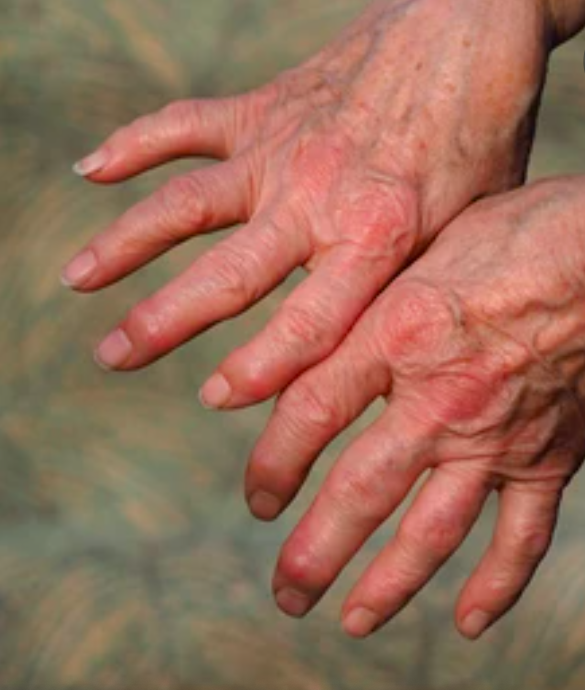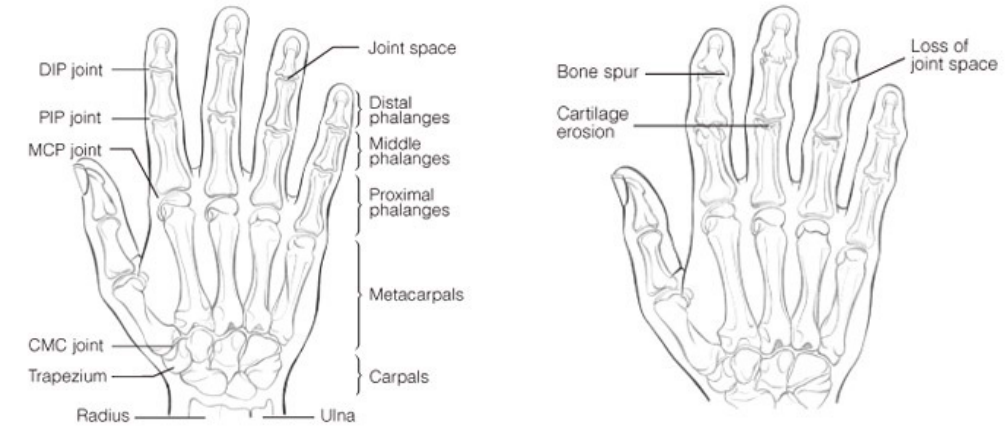
Osteoarthritis (OA) is a wear and tear arthritis affecting weight bearing joints in the body that are
most commonly used. Such joints include the hips and knees in the lower limbs, and the thumb and
fingers in the upper limbs. It more commonly affects women, with typical onset at 50-60 years of
age.
OA is a two-part process. Firstly, the cartilage on the end of the bone wears down. Secondly, the
bone starts growing around the margins of the joint, causing a lumpy enlarged appearance.
In the hand, this process can go on for years without any pain or stiffness. Then, at any given time,
some people develop inflammation in the joints which can cause pain, stiffness, swelling and
reddening of the skin. Therefore, the process of OA is painless; but rather the inflammation causes
the pain experience.
This means that even though you cannot reverse the damage (e.g. restore the cartilage and remove
the bony growths) you can treat and reduce the inflammation, which is usually the common
complaint. Many people can live with lumps and bumps but, ultimately, the pain limits activity
levels. At PHT we like to focus on ways to reduce pain and inflammation so those with OA can minimise
the need for medication and limit further joint deformity. The goal is to lead an active and
productive life by continuing to engage in activities you enjoy.

Thumb – Arthritis of the Basal Joint
This joint is very commonly involved with arthritis as it is the most commonly used joint in the body
(like the jaw). The cartilage surface of the two bones at the base of the thumb are worn away by
our repeated pinching, causing pain and grating over this joint (first carpometacarpal joint). The
bone moves out of the normal position, due to laxity of the supporting ligament leading to the
thumb collapsing inwards to the palm. This then causes the next joint along the thumb (metacarpal
joint) to bend backwards to compensate for the base of thumb joint. The thumb can then display a
‘Z’ like deformity, known as a ‘Z-deformity’. For further information on treatment for base of thumb arthritis read our blog here.
Hierarchy of Treatment
It is recommended to pursue conservative measures as the first step to managing OA in the base of
the thumb. Good results can be achieved with surgery, when conservative (non-surgical) measures
cease to be effective. Below is the hierarchy of treatment for managing OA. (It is always important
to liaise with your GP regarding medications and creams):
- Anti-inflammatory creams (“Arnica” or “Voltaren” gel).
- Vitamin supplements including glucosamine 1500mg/day, and fish oil.
- Anti-inflammatory tablets (NSAID’s).
- Splints to rest and support the joint position. Splints are also used to minimise the progression of the deformity, increase stability of the pinch grip and realign a lax joint.
- Therapy is used to stretch out the contracted joint capsule and strengthen the muscles around the joint. Therapy also includes education regarding joint protection and provision of aid and appliances to minimise joint deforming forces on the hand (e.g. opening jars).
- Steroid injections.
- Surgery.

This diagram on the left is the skeletal hand without arthritis, the diagram on the right shows the
common changes to the hand with osteoarthritis.